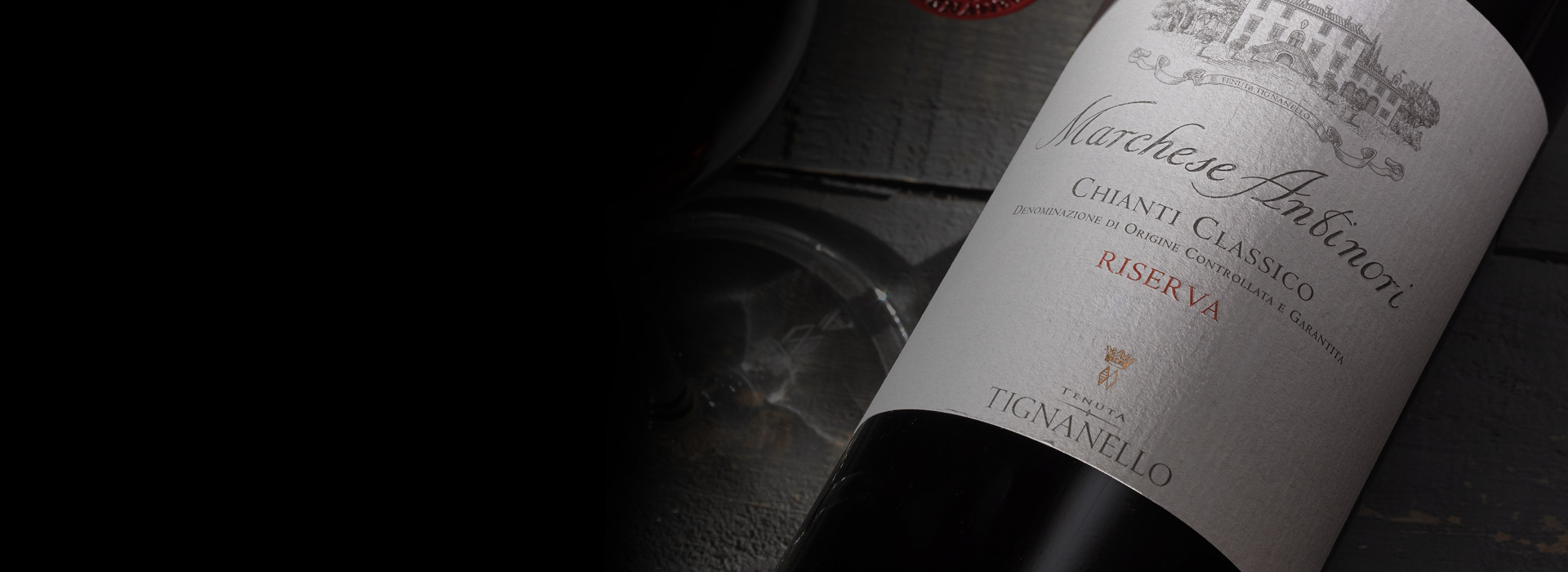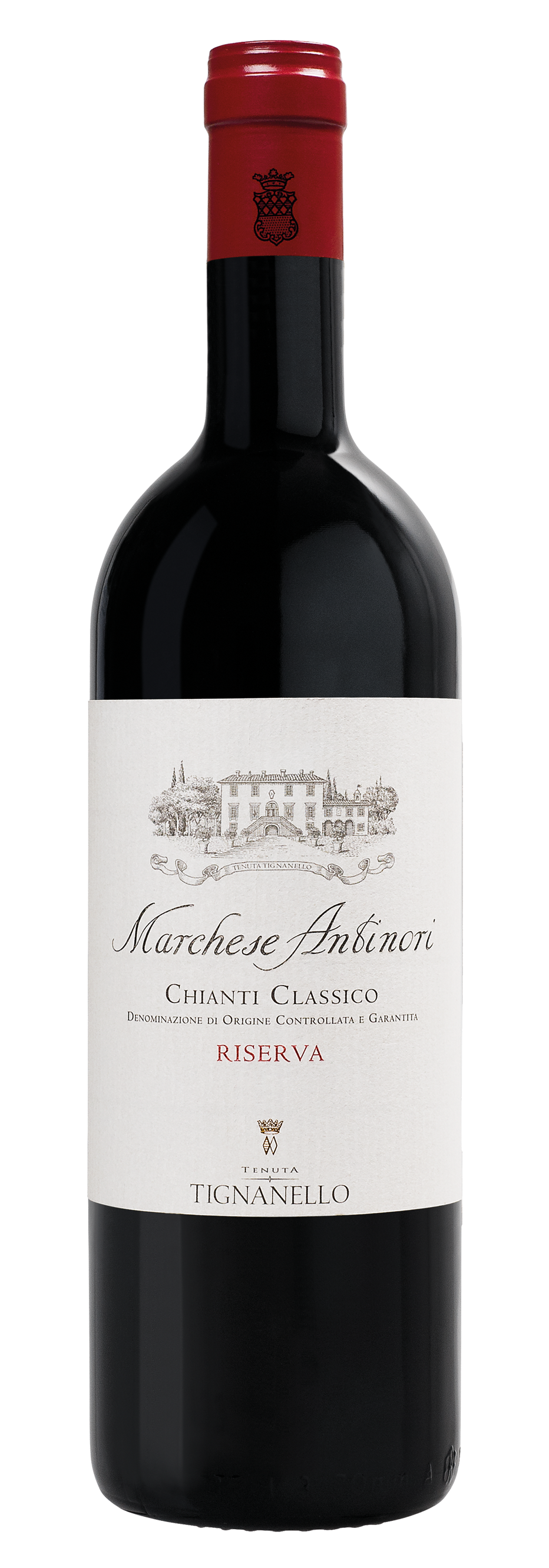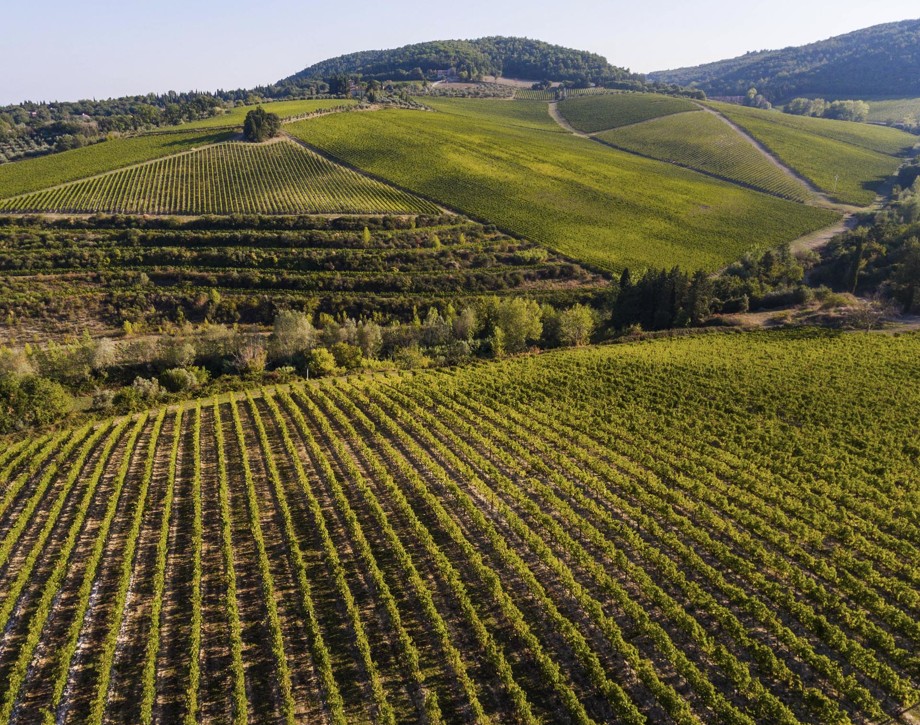Marchese Antinori

Climate
The 2020 growing season in Chianti Classico began with mild, dry winter weather. Only in the last half of March did the area experience a short cold spell. These climatic conditions prompted early budbreak in the vineyards. Spring brought average rainfall and cool temperatures. The summer months were hot but were undisturbed by extreme heat events. Intermittent rain showers provided the grape clusters with perfect growing conditions. The month of September, when harvesting operations got underway, was defined by light rainfall especially towards the end of the month ensuring the grapes reached complete phenolic maturity. The grape harvest began around September 20th with Sangiovese and was completed on October 9th with Cabernet Sauvignon.
Vinification
Upon arrival in the cellar, the grapes were destemmed, gently crushed; the must was transferred into stainless steel tanks, where alcoholic fermentation occurred in about one week’s time. Very gentle pump overs and délestage techniques were performed during maceration on the skins for an intense extraction while preserving elegant and supple tannins. Malolactic fermentation, which took place spontaneously, was completed by the end of the year. The wine was then blended and went into French and Hungarian oak barriques for approximately one year. Marchese Antinori Riserva was then bottled and given a further twelve-month period of bottle aging before being released.
Historical Data
The Tignanello estate is located in the heart of the Chianti Classico production zone, nestled between the valleys of the Greve and Pesa rivers, and extends over close to 800 total acres (319 hectares), some 130 of which (415 hectares) are planted to vines. The vineyards consist principally of the native Sangiovese grape along with such non-traditional varieties as Cabernet Sauvignon and Cabernet Franc. The Marchese Antinori is an historic wine of the Antinori cellars which, since 2011, is produced from the grapes of the Tignanello estate. It is a wine which presents itself as the full expression of the quality and elegance of the Sangiovese of this part of Tuscany.
Tasting Notes
Marchese Antinori Chianti Classico Riserva 2020 is an intense ruby red color. Expressive on the nose with fresh notes of red fruit that lead over to floral hints of mallow and lavender. The rich bouquet is accented by sweet notes of white chocolate that give rise to piquant spicy aromas. Entry on the palate is smooth and mouth filling, followed by elegant flavors with vibrant tannins that express the typical energy of the vineyards of origin. The finish is long, flavorful, and persistent echoing notes of white pepper, cocoa powder, and flowers.

The Wine
This Antinori family’s historic label, since the 2011 vintage Marchese Antinori has been produced with grapes exclusively from the Tignanello vineyard. It’s made almost entirely with Sangiovese with a small percentage of other complementary varieties. A wine that fully expresses the quality and elegance of Sangiovese grapes grown in this area.

Climate
The 2020 growing season in Chianti Classico began with mild, dry winter weather. Only in the last half of March did the area experience a short cold spell. These climatic conditions prompted early budbreak in the vineyards. Spring brought average rainfall and cool temperatures. The summer months were hot but were undisturbed by extreme heat events. Intermittent rain showers provided the grape clusters with perfect growing conditions. The month of September, when harvesting operations got underway, was defined by light rainfall especially towards the end of the month ensuring the grapes reached complete phenolic maturity. The grape harvest began around September 20th with Sangiovese and was completed on October 9th with Cabernet Sauvignon.
Vinification
Upon arrival in the cellar, the grapes were destemmed, gently crushed; the must was transferred into stainless steel tanks, where alcoholic fermentation occurred in about one week’s time. Very gentle pump overs and délestage techniques were performed during maceration on the skins for an intense extraction while preserving elegant and supple tannins. Malolactic fermentation, which took place spontaneously, was completed by the end of the year. The wine was then blended and went into French and Hungarian oak barriques for approximately one year. Marchese Antinori Riserva was then bottled and given a further twelve-month period of bottle aging before being released.
Historical Data
The Tignanello estate is located in the heart of the Chianti Classico production zone, nestled between the valleys of the Greve and Pesa rivers, and extends over close to 800 total acres (319 hectares), some 130 of which (415 hectares) are planted to vines. The vineyards consist principally of the native Sangiovese grape along with such non-traditional varieties as Cabernet Sauvignon and Cabernet Franc. The Marchese Antinori is an historic wine of the Antinori cellars which, since 2011, is produced from the grapes of the Tignanello estate. It is a wine which presents itself as the full expression of the quality and elegance of the Sangiovese of this part of Tuscany.
Tasting Notes
Marchese Antinori Chianti Classico Riserva 2020 is an intense ruby red color. Expressive on the nose with fresh notes of red fruit that lead over to floral hints of mallow and lavender. The rich bouquet is accented by sweet notes of white chocolate that give rise to piquant spicy aromas. Entry on the palate is smooth and mouth filling, followed by elegant flavors with vibrant tannins that express the typical energy of the vineyards of origin. The finish is long, flavorful, and persistent echoing notes of white pepper, cocoa powder, and flowers.

Tenuta Tignanello
The Tenuta Tignanello estate is in the heart of Chianti Classico, in the gently rolling hillsides between the Greve and Pesa river valleys. It extends over an area of 319 hectares (788 acres), of which about 165 (407 acres) are dedicated to vines. Two of the estate’s prized vineyards are on the same hillside, Tignanello and Solaia, on soils that originated from marine marlstone from the Pliocene period rich in limestone and schist.
Soil
Calcareous rocky soils with alberese (marl limestone) and marl.


















